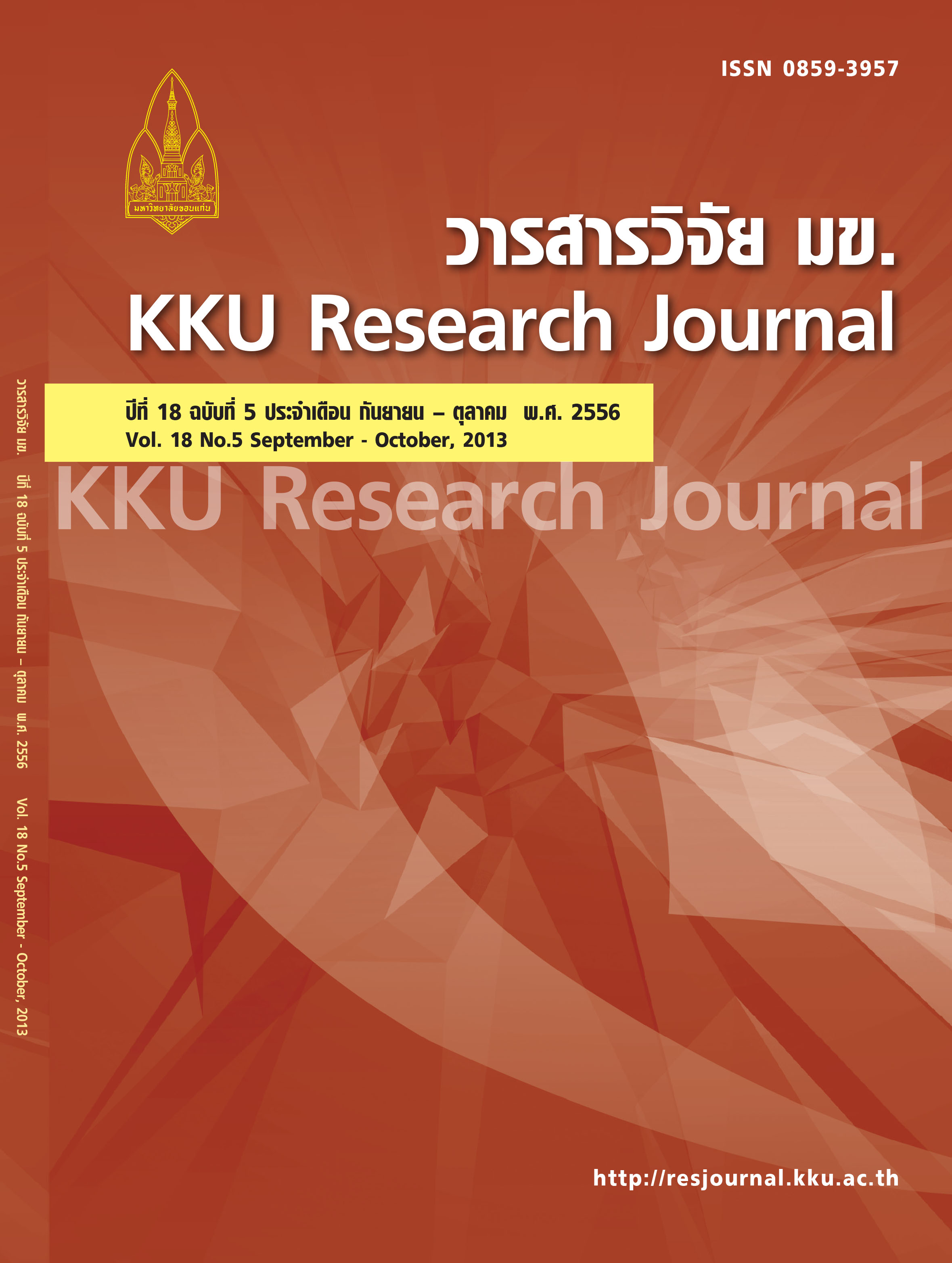Receiver operating characteristic (ROC) curves to identify waist circumference cut-off points for predicting the overweight and obese school children
Main Article Content
Abstract
Waist Circumference (WC) is used as an anthropometric index for central body fat distribution. Evidence shows that WC is one reliable index to predict abdominal obesity in children but an increased waist circumference is associated with the metabolic syndrome. However, data of WC is less available in Thai children. This study aims to identify WC cut-off points for predicting the overweight and obese school children. Subjects were one hundred and ninety-nine children (105 boys and 94 girls), aged 6-10 years, and were enrolled from primary schools in Nakhon Pathom province and Bangkok. WC was measured at midway between the lowest rib and the iliac crest. Nutritional status of children was categorized using two references; i) Thai Growth reference; using weight-for-height z-score (Thai-WHZ) to define the overweight WHZ >+1.5 SD and the obese WHZ >+2.0 SD, and ii) The International Obesity Task Force (IOTF) reference using body mass index (BMI)-for-age to define the overweight and obese that were equivalent to the adult’s BMI of 25 kg/m2 and 30 kg/m2, respectively. Receiver operating characteristic (ROC) curves analysis was applied to determine WC cut-offs based on optimal combination of sensitivity (SN) and specificity (SP). Based on Thai-WHZ reference, the optimal WC cut-offs for predicting the overweight were 66.0 cm for boys and 65.5 cm for girls, whereas WC values to indicate the obesity were 67.5 cm for both gender. When IOTF-BMI reference was applied, WC cut-offs for predicting the overweight were 67.5 cm for boy and 65.5 cm for girls, for obese the cut-offs were 74.0 cm for boy and 72.0 cm for girls. For assessment of obesity, cut-offs based on IOTF-BMI reference were considered to be overestimate compared to those cut-offs based on Thai-WHZ reference. Future study needs to determine the relationship of WC and other adverse health outcomes in school-aged children.
Article Details
How to Cite
Wimonpeerapattana, W., & Yamborisut, U. (2017). Receiver operating characteristic (ROC) curves to identify waist circumference cut-off points for predicting the overweight and obese school children. Asia-Pacific Journal of Science and Technology, 18(5), 861–868. retrieved from https://so01.tci-thaijo.org/index.php/APST/article/view/83006
Section
Research Articles


